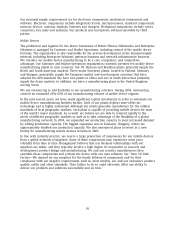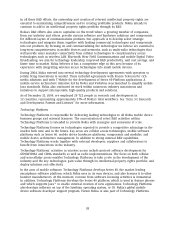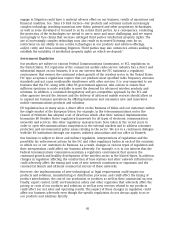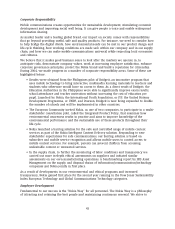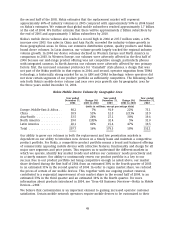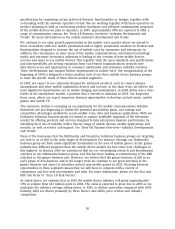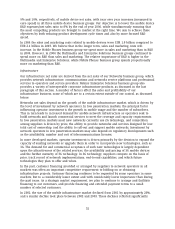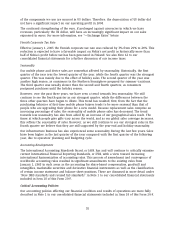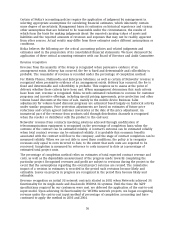Nokia 2004 Annual Report Download - page 47
Download and view the complete annual report
Please find page 47 of the 2004 Nokia annual report below. You can navigate through the pages in the report by either clicking on the pages listed below, or by using the keyword search tool below to find specific information within the annual report.ITEM 5. OPERATING AND FINANCIAL REVIEW AND PROSPECTS
5.A Operating Results
This section begins with an overview of our four business groups and the principal factors and
trends affecting our results of operations. The overview is followed by a discussion of our critical
accounting policies and estimates that we believe are important to understanding the assumptions
and judgments reflected in our reported financial results. We then present a detailed analysis of
our results of operations for the last three fiscal years and our liquidity and capital resources.
The following should be read in conjunction with our consolidated financial statements included
in Item 18 of this Form 20-F and ‘‘Item 3.D Risk Factors’’. Our financial statements and the
financial information discussed below have been prepared in accordance with IFRS. For a
discussion of the principal differences between IFRS and US GAAP, see ‘‘—Principal Differences
between IFRS and US GAAP’’ below and Note 37 to our consolidated financial statements.
Overview
Nokia is the world’s largest manufacturer of mobile devices and a leader in mobile network
equipment, solutions and services. We also provide equipment, solutions and services for
enterprise customers.
On January 1, 2004, Nokia reorganized to further align the company’s overall structure with its
strategy, to better position each business group to meet the specific needs of diverse market
segments, and to increase Nokia’s operational efficiency and maintain our economies of scale. The
structure includes four business groups: Mobile Phones, Multimedia, Enterprise Solutions and
Networks. There are also two horizontal groups that support the mobile device business groups:
Customer and Market Operations and Technology Platforms. In addition, the structure includes
common group functions that consist of common research and general group functions. Prior to
January 1, 2004, Nokia’s organizational and reporting structure consisted of two main business
groups, Nokia Mobile Phones and Nokia Networks, as well as the company’s venturing arm, Nokia
Ventures Organization, and the common group functions.
Mobile Phones continues the development of mobile phones based mainly on GSM, CDMA and
WCDMA technologies. Multimedia focuses on bringing connected mobile multimedia to consumers
in the form of advanced mobile devices, including 3G WCDMA mobile devices, and solutions.
Enterprise Solutions aims to help businesses and institutions extend their use of mobility from
mobile devices for voice and basic data to secure mobile access and use of their content and
applications. Networks is a leading provider of network infrastructure, communications and
networks service platforms and professional services to operators and service providers.
The following discussion and analysis by management of our operating and financial results for
fiscal years 2004 compared with 2003 is based upon our organizational and reporting structure as
of January 1, 2004. Discussion and analysis by management of our operating and financial results
for fiscal years 2003 compared with 2002 is based upon our organizational and reporting structure
prior to January 1, 2004, as a comparison based upon the new business groups would not be
meaningful.
For purposes of the discussion under ‘‘—Principal Factors Affecting our Results of Operations—
Mobile Devices’’ and ‘‘—Research and Development, Patents and Licenses’’ our mobile device net
sales and costs include total net sales and costs of the Mobile Phones and Multimedia business
groups as well as the Mobile Devices business unit of the Enterprise Solutions business group.
Mobile device net sales and costs exclude the Security & Mobile Connectivity business unit of the
Enterprise Solutions business group. The results of that business unit historically have been
immaterial.
46


